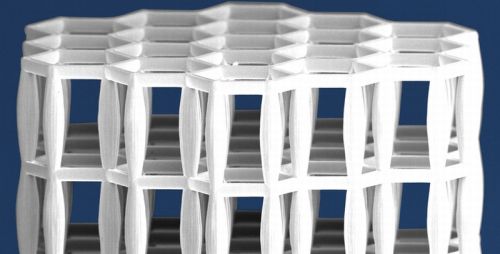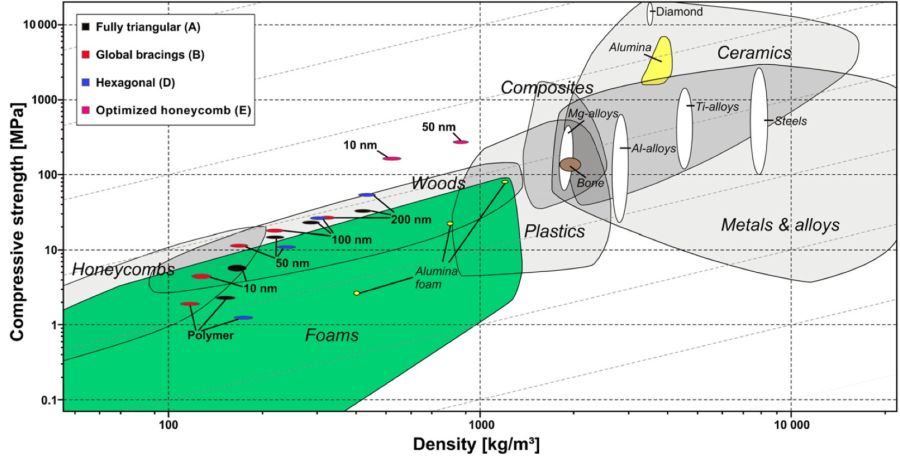Humans are curious by nature and this curiosity has led them to morph from Stone Age to Bronze Era. As the centuries progressed, humans too evolved intellectually and hence quenched their thirst for more by reaching solutions technologically. As we can see in the current century, technology is touching its zenith researchers are busy manipulating substances at atomic level so that human race can witness totally new and evolutionary materials.
Until now, it was difficult to find or to create bone like material artificially but a team of researchers headed by Jens Bauer at Karlsruher Institute of Technology (KIT) has exploded this myth. They were able to come up with a material which they say is less dense than water and is equally stronger as steel.
Bauer’s research
All the known materials were plotted on a graph known as strength density chart. Keeping the line of water density at the center, that is, 1000kg/m3 the materials were placed on either side. Convention of placement was based on the weight, which means, lightweight materials were placed on the left and heavier to the right side. Solid material is considered heavier than water however, the situation changes if it becomes porous like wood and solid. Like on its physical plane, the atomic surface too undergoes the same structural transformation when observed under a microscope and this served a source of inspiration to Bauer for his research.
For couple of years, material scientists were trying to figure out the polymers that might go into the empty spaces through computer simulations. However, they were not able to reach the required goal. One of the main reasons for this was the lack of tools, which would help in fabricating materials with defined patterns at the scale of a human hair.
However, Nanoscribe, a German based high-tech company came to Bauer’s rescue. They developed laser lithography systems as per his requirements.
A drop of polymer when placed on a glass slide is exposed to a laser beam. With the help of computer simulation, the slide is made to expose only those areas of the polymer, which was to be made solid. Hence, the process is repeated, till the time an intricate internal structure is formed and extra liquid is washed away.
In order to increase the strength of the resultant material, Bauer coated them with a thin layer of alumina (aluminium oxide) before subjecting them to the final test. The evolved material became slightly denser than before but remained lightweight as a whole.
Evolutionary Material
The vital feature of this material is its stiffness and strength. Researchers were working very hard towards fabricating this form of evolutionary material(s). They envision that this could help them in various fields of future technology, like in enhancing the speed of computer to combating the heat while entering into the Red Planet’s atmosphere.
The advancement of 3D printing, new polymers and laser technology has led to this new development. All these developments hint at the probability that we might witness in the near future something like having a super light suits by humans and owning equally light machinery parts by aircrafts and other currently heavy machinery equipments.





